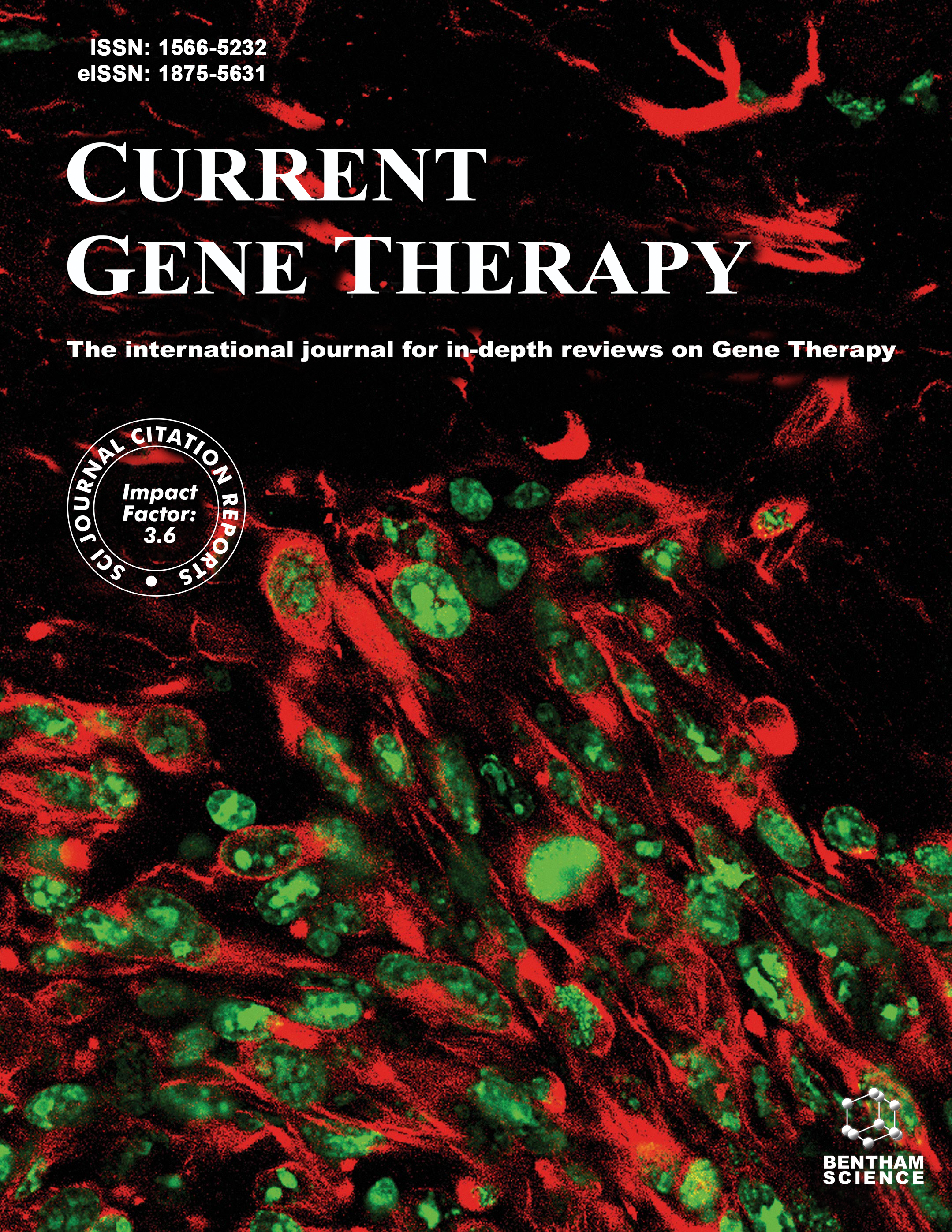- Home
- A-Z Publications
- Current Gene Therapy
- Previous Issues
- Volume 19, Issue 2, 2019
Current Gene Therapy - Volume 19, Issue 2, 2019
Volume 19, Issue 2, 2019
-
-
Cell Therapy in Solid Organ Transplantation
More LessAuthors: Songjie Cai and Anil ChandrakerTransplantation is the only cure for end-stage organ failure. Current immunosuppressive drugs have two major limitations: 1) non antigen specificity, which increases the risk of cancer and infection diseases, and 2) chronic toxicity. Cell therapy appears to be an innovative and promising strategy to minimize the use of immunosuppression in transplantation and to improve long-term graft survival. Preclinical studies have s Read More
-
-
-
Correlation between MDSC and Immune Tolerance in Transplantation: Cytokines, Pathways and Cell-cell Interaction
More LessAuthors: Tianying Yang, Jiawei Li, Ruimin Li, Chunchen Yang, Weitao Zhang, Yue Qiu, Cheng Yang and Ruiming RongMDSCs play an important role in the induction of immune tolerance. Cytokines and chemokines (GM-CSF, IL-6) contributed to the expansion, accumulation of MDSCs, and MDSCs function through iNOS, arginase and PD-L1. MDSCs are recruited and regulated through JAK/STAT, mTOR and Raf/MEK/ERK signaling pathways. MDSCs’ immunosuppressive functions were realized through Tregs-mediated pathways and their direct Read More
-
-
-
Understanding Gene Therapy in Acute Respiratory Distress Syndrome
More LessAuthors: Xue-Peng Zhang, Wei-Tao Zhang, Yue Qiu, Min-Jie Ju, Guo-Wei Tu and Zhe LuoAcute Respiratory Distress Syndrome (ARDS) and its complications remain lifethreatening conditions for critically ill patients. The present therapeutic strategies such as prone positioning ventilation strategies, nitric oxide inhalation, restrictive intravenous fluid management, and extracorporeal membrane oxygenation (ECMO) do not contribute much to improving the mortality of ARDS. The advanced understandin Read More
-
-
-
High Mobility Group Box 1: An Immune-regulatory Protein
More LessAuthors: Jingjing Zhao, Tianle Sun, Shengdi Wu and Yufeng LiuHigh mobility group box 1 (HMGB1) presents in almost all somatic cells as a component of the cell nucleus. It is necessary for transcription regulation during cell development. Recent studies indicate that extracellular HMGB1, coming from necrotic cells or activated immune cells, triggers inflammatory response whereas intracellular HMGB1 controls the balance between autophagy and apoptosis. In addition, reduc Read More
-
-
-
Functional Immunoregulation by Heme Oxygenase 1 in Juvenile Autoimmune Diseases
More LessAuthors: Xueyan Zhang, Shupeng Shi, Jie Shen, Mingyi Zhao and Qingnan HeAn autoimmune disease is an inflammatory condition in which the human body’s immune system attacks normal cells, resulting in decreased and abnormal immune function, which eventually leads to tissue damage or organ dysfunction. In the field of medicine, especially in pediatrics, knowledge about autoimmune diseases is still inadequate. Some common juvenile autoimmune diseases such as Henoch–Schonlein pur Read More
-
-
-
The Relationship between Ferroptosis and Tumors: A Novel Landscape for Therapeutic Approach
More LessAuthors: Xiaojun Xia, Xiaoping Fan, Mingyi Zhao and Ping ZhuBackground: Ferroptosis is a newly discovered form of iron-dependent oxidative cell death characterized by lethal accumulation of lipid-based reactive oxygen species (ROS). It is distinct from other forms of cell death including apoptosis, necrosis, and autophagy in terms of morphology, biochemistry and genetics. Discussion: Ferroptosis can be induced by system xc- inhibitors or glutathione peroxidase 4 (GPx4) inhibitors, Read More
-
-
-
Circular RNAs Serve as Novel Biomarkers and Therapeutic Targets in Cancers
More LessAuthors: Shuai Fang, Jinchang Pan, Chengwei Zhou, Hui Tian, Jinxian He, Weiyu Shen, Xiaofeng Jin, Xiaodan Meng, Nan Jiang and Zhaohui GongCircular RNAs (circRNAs) are a class of non-coding RNAs (ncRNAs) that structurally form closed loops without 5'-end cap and 3'-end poly(A) tail unlike linear RNAs. CircRNAs are widely present in eukaryotic cells with the capabilities of structural stability, high abundance and cell- /tissue-specific expression. A growing body of researches suggest that the dysregulated circRNAs are intimately relevant to the occurrence and Read More
-
-
-
Three Cases of Leber’s Hereditary Optic Neuropathy with Rapid Increase in Visual Acuity After Gene Therapy
More LessAuthors: Yong Zhang, Jia-jia Yuan, Hong-li Liu, Zhen Tian, Si-wei Liu and Bin LiBackground: During the first few trials of gene therapy for Leber’s hereditary optic neuropathy performed by our group, the visual acuity of the patients increased gradually over several months, or even years. However, in the current round of gene therapy for Leber’s hereditary optic neuropathy, we noted that the visual acuity of three patients increased rapidly, within a few days after treatment. Case presentation: Th Read More
-
Volumes & issues
-
Volume 25 (2025)
-
Volume 24 (2024)
-
Volume 23 (2023)
-
Volume 22 (2022)
-
Volume 21 (2021)
-
Volume 20 (2020)
-
Volume 19 (2019)
-
Volume 18 (2018)
-
Volume 17 (2017)
-
Volume 16 (2016)
-
Volume 15 (2015)
-
Volume 14 (2014)
-
Volume 13 (2013)
-
Volume 12 (2012)
-
Volume 11 (2011)
-
Volume 10 (2010)
-
Volume 9 (2009)
-
Volume 8 (2008)
-
Volume 7 (2007)
-
Volume 6 (2006)
-
Volume 5 (2005)
-
Volume 4 (2004)
-
Volume 3 (2003)
-
Volume 2 (2002)
-
Volume 1 (2001)
Most Read This Month
Article
content/journals/cgt
Journal
10
5
false
en

Most Cited Most Cited RSS feed
-
-
New Hope for Intervertebral Disc Degeneration: Bone Marrow Mesenchymal Stem Cells and Exosomes Derived from Bone Marrow Mesenchymal Stem Cell Transplantation
Authors: Xiao-bo Zhang, Xiang-yi Chen, Jin Qi, Hai-yu Zhou, Xiao-bing Zhao, Yi-cun Hu, Rui-hao Zhang, De-chen Yu, Xi-dan Gao, Ke-ping Wang and Lin Ma
-
- More Less

